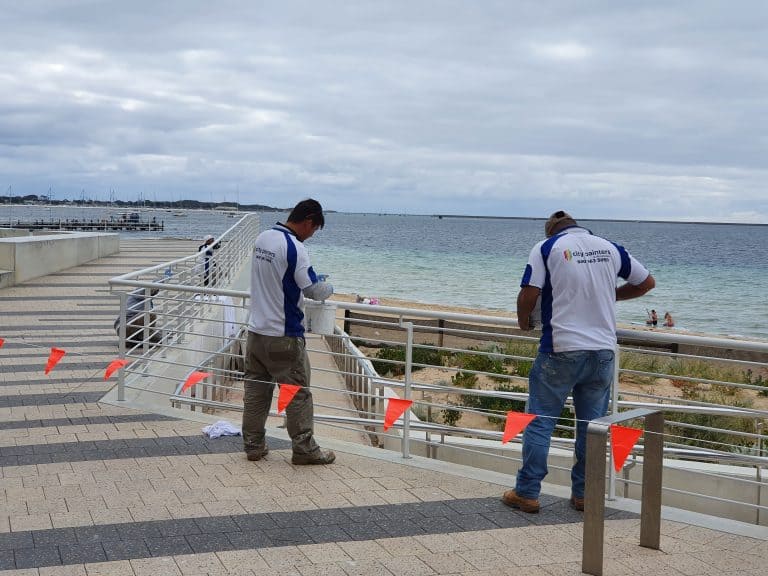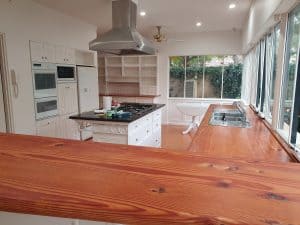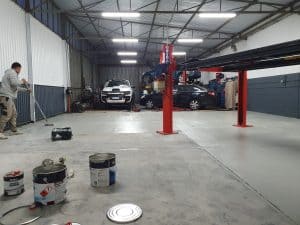
Sometimes, the task of an industrial painter requires them to enter small spaces. Experts should consider a few challenging factors when organizing a painting project in confined spaces. This blog post discusses 5 Unique Challenges of Painting Confined Spaces that a painting organization needs to take care of before beginning their job in small spaces.
Storage tanks, pipelines, penstocks, water towers, and train tank wagons are a few projects that frequently require painting in confined places. Thus, serious crew safety hazards must be recognized and prepared before confined space work is started.
Working in a Confined Area
The persons performing the task or leading the rescue operation in an emergency may not feel safe in the enclosed or partially enclosed area with restricted entry. Painting in limited spaces can be very dangerous in many commercial and industrial settings.
Although people may need to enter these zones for repair, maintenance, inspection, or cleaning, they need to become more familiar with working in confined areas. Pipelines, vats, vaults, boilers, water cisterns, kilns, silos, storage bins, process vessels, tanks, and any place with little room to move around comfortably and safely are common confined spaces that could prove to be detrimental to employees’ safety.
Negative Vapor
The previously contained components in a small region, such as a storage tank, can emit toxic vapors. When there is no detection equipment, these vapors frequently congregate at the bottom of tanks and do not emit any visual evidence that they are present.
To avoid exposure to dangerous gases, crews should utilize a multi-gas monitor to assess the air quality before entering a confined space. This monitor should be able to detect harmful or combustible compounds as well as measure oxygen levels.
Physical Risks
Cramped places’ most common physical hazards are limited access, possibly explosive machinery, flying debris, excessive noise, insufficient illumination, and extreme temperatures. You should eliminate all physical hazards to ensure that workers can accomplish their tasks safely and leave confined spaces.
Limited Exit and Entry Zone
Many painting projects in industrial settings require confined entry and departure points, such as pipelines, silos, storage tanks, smokestacks, and water towers. It’s crucial to determine whether temporary ladders or working platforms would restrict the means of egress capacity or lower the number of exits to control and minimize the unique risks associated with restricted means of entry and exit. You should consider that any permanent structures would hinder workers’ ability to flee or be rescued in an emergency.
Inadequate ventilation in The Confined Area
When working in confined spaces, crews should wear suitable safety equipment. With air-supplied respirator hoods, a well-designed ventilation system should ensure fresh air circulates throughout the space. Engineering controls, procedural controls, and personal protective devices can keep crews safe.
Oxygen Rich and Oxygen Poor Environments
The air is deemed oxygen-deficient when the oxygen content falls below the oxygen content of the natural environment. Painting, welding, and cutting processes, combined with insufficient air circulation, can result in an oxygen-deficient atmosphere in small spaces such as silos, storage tanks, and process plant vessels.
On the other side, too much oxygen in the air can cause combustible materials to ignite more easily and burn faster. You should never use pure oxygen in place of outside breathing air to ventilate limited places properly. Compressed tanks should never be stored or placed in restricted areas to reduce the risk of fires or explosions.
Conclusion
Thanks for reading the article on 5 Unique Challenges of Painting Confined Spaces! Before beginning any task, it is essential to consider the potential for adopting alternative techniques for painting operations in confined places. Establishing safe work techniques at all stages of the painting project is necessary if there are no other options to protect everyone’s safety.








